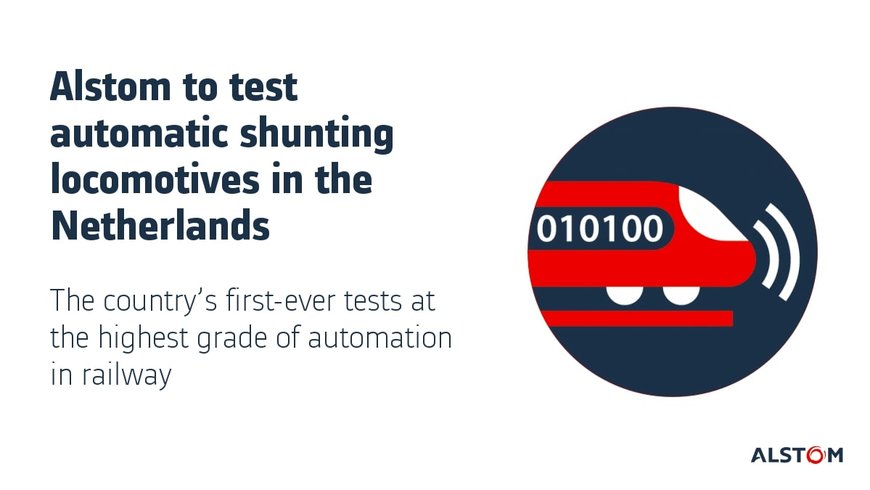railway-international.com
11
'20
Written on Modified on
Alstom to test automatic shunting locomotives in the Netherlands
The country’s first-ever tests at the highest grade of automation in railway

- ATO main advantages: capacity increase, cost reduction, energy consumption reduction for greener mobility
- First-time GoA level 4 automation with shunting trains in the Netherlands
- Increased flexibility of operations for passenger and freight operators
15 July 2020 – Alstom has signed an agreement with Dutch infrastructure operator ProRail for the performance of Automatic Train Operation (ATO) tests on shunting locomotives in 2021. The tests will target the highest grade of automation (GoA4[1]) in a shunting yard. The objective is to demonstrate how the use of fully automated trains can optimise rail operation to ensure cost-effective and sustainable mobility in the face of growing demand in shunting operations.
Alstom will equip a diesel-hydraulic shunting locomotive owned by Lineas, the largest private rail freight operator in Europe, with automatic control technology, intelligent obstacle detection and environment recognition. Classic tasks, such as starting and stopping, pushing wagons, controlling traction and brakes and the handling of emergencies, will be fully automated, train staff remaining aboard to ensure safety protocol during the tests.
“This project is paving the way for fully digitalised railway. These tests will help the European rail system benefit from an increase in capacity, reduced energy consumption and cost while offering higher operational flexibility and improved punctuality. This test is fully in line with Alstoms strategy to bring added value to our customers for smart and green mobility,” said Bernard Belvaux, Alstom Managing Director for Benelux.
Alstom has demonstrated the advantages of ATO especially on metro systems around the world. Experience shows that automation leads to capacity increase, cost reduction, energy savings and flexibility of operations. Automated trains are able to run closer together, as human reaction times are no longer a consideration, effectively increasing network capacity. Trains also operate more uniformly, leading to more effective use of energy. GoA ranges from level 1, with partial operation by a driver, up to level 4, where the train is fully autonomous. Automation in rail is a way for operators to maximise the productivity of their networks without making expensive changes to the infrastructure.
At the end of 2018, Alstom carried out successful ATO tests at GoA level 2 with ProRail and a freight locomotive belonging to Rotterdam Rail Feeding (RRF) on the Betuweroute, a double-track freight railway running from Rotterdam Harbour to Germany.
With these latest tests in the Netherlands, Prorail and Lineas demonstrate their willingness to introduce automated trains in the Netherlands and contribute to the development of modern railway systems in the country.
[1] GoA Level 4 is the highest standard of automation in rail. It entails fully automated starting and stopping, operation of doors and handling of emergencies without the direct involvement of any on-train staff.
www.alstom.com

